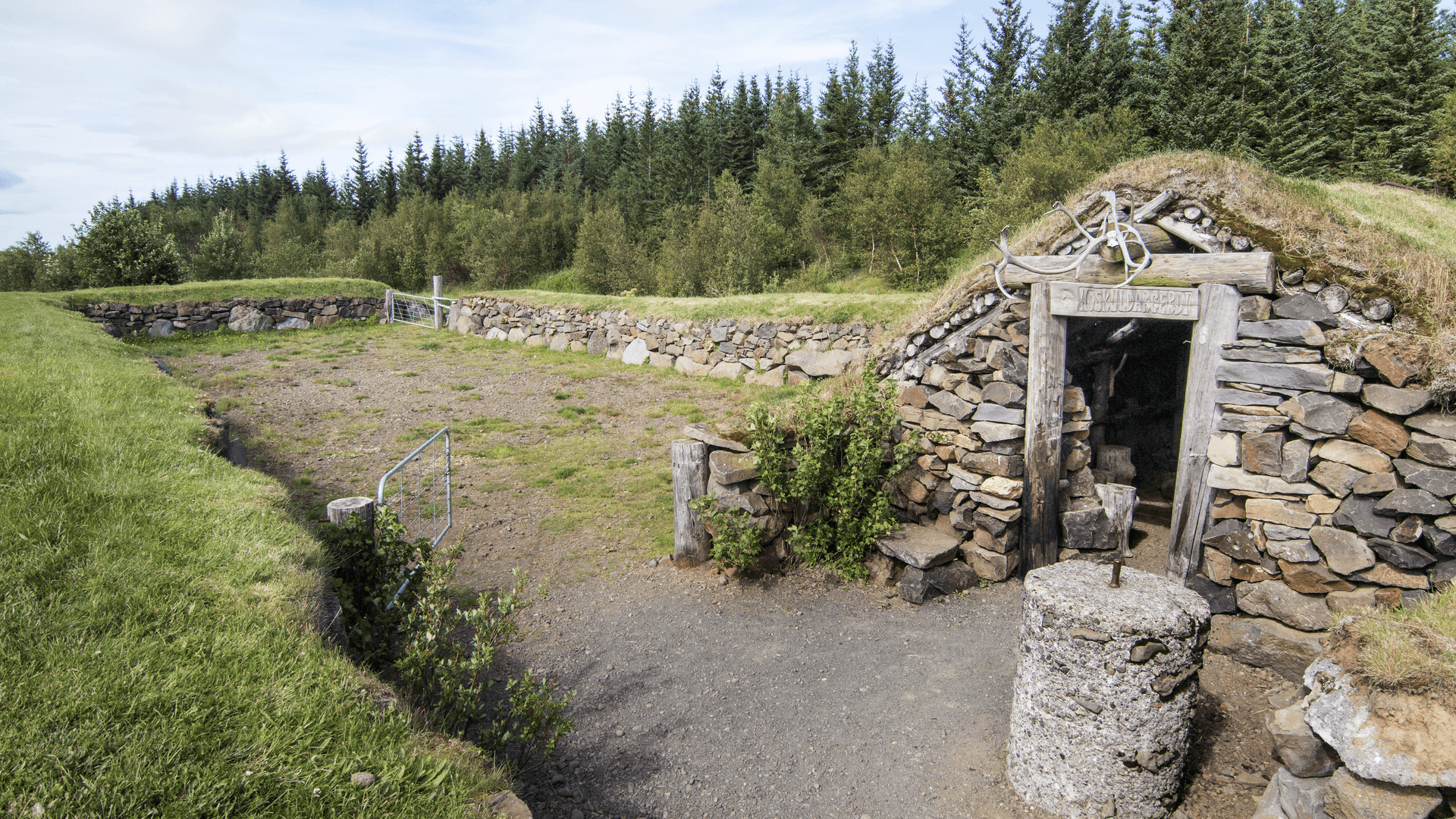You are here
The settlement of Reykholt in the western region of Iceland is one of the country’s most renowned historical sites. It’s located in the village of Reykholtsdalur and the Reykjadalsá River Valley about an hour east of Borgarnes. This was once the home of the writer, scholar and chieftain Snorri Sturluson, who lived here during the 13th century. Snorrastofa, established in 1988, commemorates his name and now stands here as a center for independent research and medieval studies. There is an incredible amount of unique elements to explore and learn about including Reykholtskirkja (Church of Reykholt), Royal Grove, Snorri’s Garden, the Old District School, Snorrastofa, Site of the Ancient Abode, a medieval church, the 19th-century church, Skrifla Hot Spring, Höskuldur’s Pen, Snorri’s Pool, and the Húsafell Stones. Visiting hours are every day from 10:00 to 18:00 from April 1 through September 31, and 10:00 to 17:00 on weekdays from October 1 through March 31. Tours, talks, and lectures about the historical events of the area are offered throughout the year in Icelandic, Nordic, English, and German languages. It’s free to walk about the grounds, but there are fees for their exhibition entrance and other services. The staff is happy to help you navigate the grounds and provide you with a valuable and rewarding experience (personal services and guided tours available). More information is available on their website.
Snorri established his farm in 1206 and remained here until he was killed in autumn of 1241. At the time he was opposed to Norway’s bid to annex Iceland, and he was murdered by rivals with the support of the Norwegian King Hákon. Snorrastofa hosts the “Snorri’s Saga” exhibition, which traces his life from 1179 to 1241 and recounts his final hour fleeing down a tunnel beneath his farm house. This passage was discovered during construction of a sports hall in 1931 and has since been restored. Upon Snorrastofa’s official opening, the ceremonies were proudly attended by Vigdís Finnbogadóttir, President of Iceland, and King Olaf V of Norway.
Outside, there is a cemetery with several gravestones called the Húsafell Stones. They were carved by the descendants of Reverend Snorri Björnsson from Húsafell and date from the late 19th century. In front of the Rectory stands a statue of Snorri by Gustav Vigeland. There is also Snorri’s pool, which is fed by the Skrifla hot spring. There are records of this hot water being used for bathing since the 10th century. The inscription "V.Th. 1858" that is carved in stone at the intake duct marks the restoration initiative of Pastor Vernharður Þorkelsson. In Sturlunga Saga the hot water pool is mentioned several times, and a passage depicts Snorri in it chatting with friends. This pool was one of the first 10 archaeological remains to be listed in Iceland in 1817. It is approximately 4 meters in diameter and 0.7 to 1.0 meters deep (construction is not original). Note that it is forbidden to bathe in the pool, and the water can be extremely hot!
Snorri Sturluson is most famous for his records of the Old Norse language and mythology of medieval Iceland. “Heimskringla” is his written account of the Norwegian kings from the 10th to the 12th centuries, and it is filled with poetry forms and imagery from ancient Nordic times. While the name wasn’t used until the 17th century, it is derived from the first two words of one of the manuscripts, "kringla heimsins," which means "the circle of the world." He is also believed to have written Egils Saga, one of Iceland’s most beloved stories. The tale describes the clan of Viking Egil Skallagrímsson over the years 850 to 1000 and traces the family’s lineage from Egil's grandfather to his offspring. It is composed of multiple manuscripts, the oldest dating back to 1240 AD. It begins in Norway when strife with the royal house leads the family to leave the country and settle in Iceland. Egil and his brother Throlf are born and later become outlaws to Norway. They end up roaming Scandinavia and serving the king of England as they try to reclaim their former property.
Archeologists are still working here and finding medieval remains. You can purchase a variety of items in the visitor’s shop, and all proceeds go to the development of Reykholt and Reykholt’s church. Nearby there are the lava waterfalls Hraunfossar, the Surtshellir caves, and the hot springs of Deildartunguhver used for geothermal power (too hot to swim). If you are looking to stay longer than a day, there are several accommodations in the area including the beautifully built boarding school that functions as the Edda-hotel in the summer.
Logistics + Planning
Current Weather: Powered by Dark Sky






























Comments
Sign In and share them.